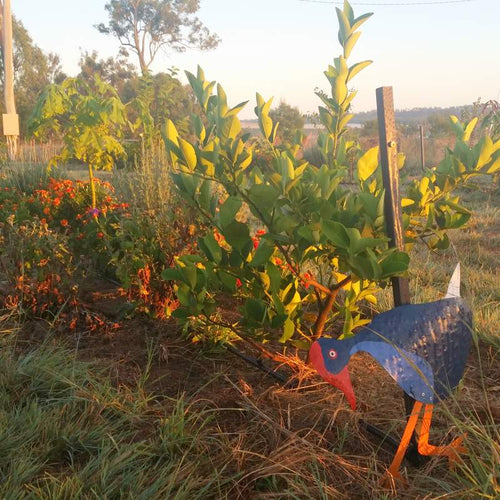Planting a perennial pasture
We have been talking about perennial pasture for months now. Actually I wrote about it in July 2013, so its been nearly two years in the planning and discussing phase. This weekend we bought pasture seed, ploughed up about 10 acres and planted the first section of our 60 acres of cultivation land with a perennial pasture mix. What were we waiting for? Rain mostly, and also just deciding what to plant and how to plant it....
 |
| ploughing the paddock one last time |
Here’s what I wrote before about why we wanted to try to establish a perennial pasture instead of growing forage for our cattle:
When we looked at how much we had spent on diesel, seed, and fertiliser just to plant these forage crops, which never made it to hay bales, we started to question whether it was really worth doing. Forage crops do have more energy and protein compared to perennial grasses, but they cost more to grow and are unpredictable in dry-land farming.
From a permaculture perspective, all this driving around in the tractor, ploughing and planting, when we could be just maintaining a perennial pasture, is not really optimising our yield. On a monetary basis, maybe when diesel and fertiliser were cheaper this was worth doing, but from what we have seen so far, and given that costs are only going to increase, we would be better to maintain a perennial pasture.
And on a time and energy basis the arrangement is far from optimal. A perennial pasture that is established and just needs to be maintained with both careful management of cattle and the occasional dose of fertility enhancers would be more optimal in terms of energy, time and money. While we do occasionally need some hay if we have a really bad season, it would also be better for us to let the cattle do the harvesting, by strip grazing the paddock, instead of driving around making and stacking bales. And we can make hay from perennial pasture instead of planting forage.
As I explained in that post, our pasture currently consists mainly of African Love Grass. Our cattle do eat it when its green, and to be honest, it is the first grass to grow after winter and is has sustained our cattle thus far. Unfortunately its the best grass we have, compared to blue couch and some other very feeble natives, but there are plenty of better species that we can plant. The three desirable traits in a pasture grass are:
- Perennial - live for more than 2 years
- Palatable - high proportion of leaf and actively selected by stock
- Productive - produce large quantity of useful forage.
Rhodes grass (Chloris gayana)
Blue grass (Bothriochloa insculpta)
Digit grass (Digitaria eriantha spp. Eriantha)
Green Panic Panicum maximum var. trichoglume - (more useful in shaded areas)
All of these are grasses produce tall, thick blades of delicious grass. The first two are spreading, while the others are tufted. We decided to plant a blend of the first three, with a legume (wynn cassia, which seems to grow well at our property)
I would have liked to plant and even wider variety, but we were limited by the cost of seed and the logistics of setting up the cultivator drill to plant the seed. We had some robust discussions about whether or not to plough. In the end we decided that one paddock really did need to be ploughed as it hadn’t been cultivated since we moved the house through that paddock, and it was starting to sprout some rather large wattle trees and had some bare patches with hard packed soil. Another area is starting to have some good grass established without our intervention, and so we probably won’t plough that area.
We used the “off-set” disc plough, which effectively turns the top of the soil, so the weeds growing in the paddock are turned in as “green manure” and we didn’t worry about it being perfectly smooth or weed-free. We took some of the “boots” off the cultivator so that the seed would spray out more randomly, and the tynes were just touching the ground, so most of the seed sat on top or just below the soil.
The afternoon after we planted we got some decent rain over the property, so we are hoping to continue to get showers through February and start to get this pasture established! We will be ploughing and planting the entire cultivation area (60 acres) gradually (and as usual, “we” means Pete drives the tractor and I cheer from the sidelines and open the occasional seed bag). After a very hot weekend, we were both very pleased to say, “if this works, that’s the last time we have to plough that ground”.
Not only is ploughing boring, hot, dusty, diesel-consuming work, it doesn’t help our soil. It destroys soil structure, and harms the microbial and macrobiotic life in the soil (i.e. earthworms, if we have any). If we put our effort into building soil instead of ruining it, we should eventually see a more productive property and higher carrying capacity. We struggled to keep 20 cows and calves on 258 acres, so we certainly have room to improve!
Have you planted (or do you maintain) a successful perennial pasture? What do you look for in you pasture?






















Leave a comment